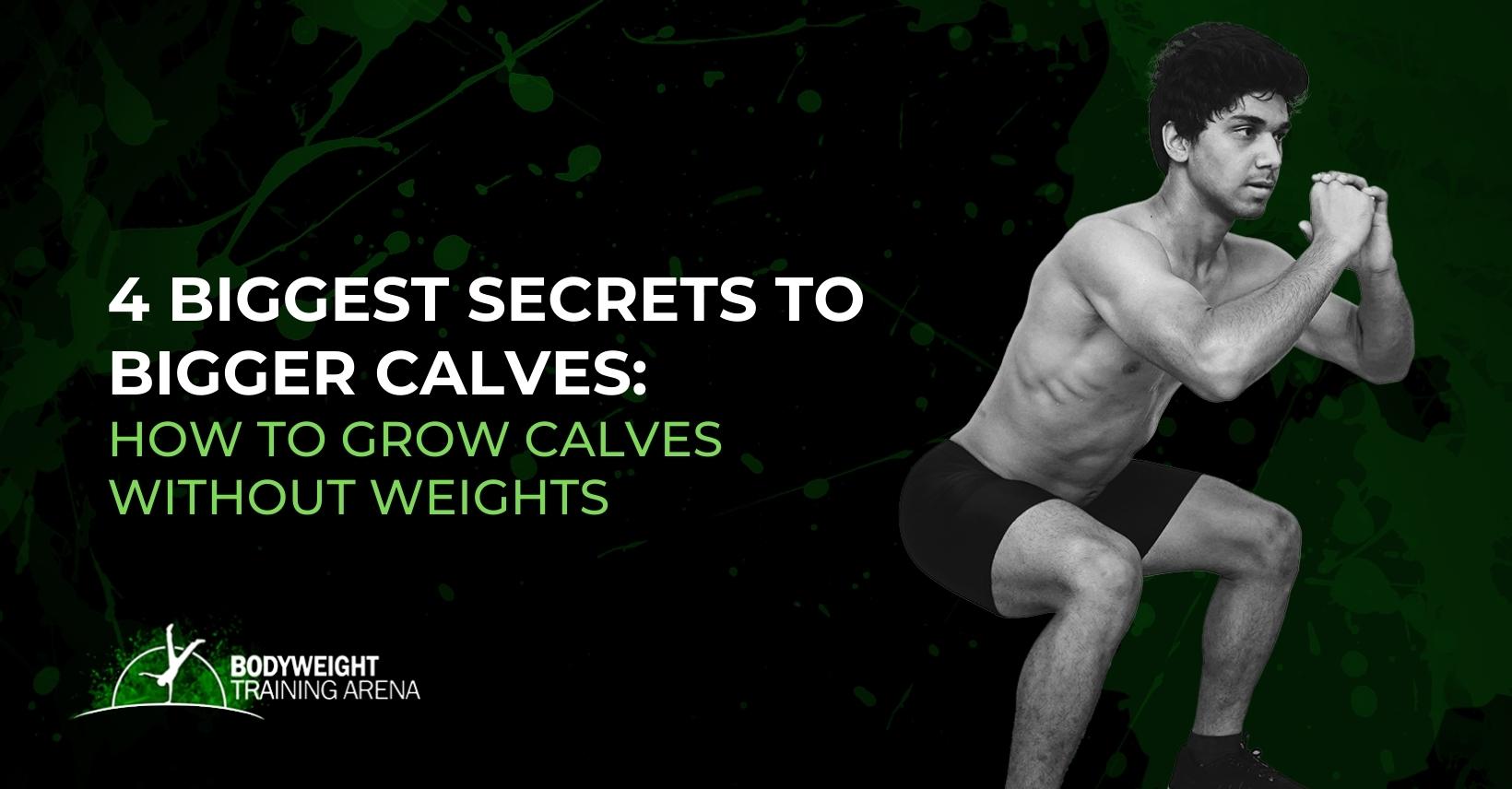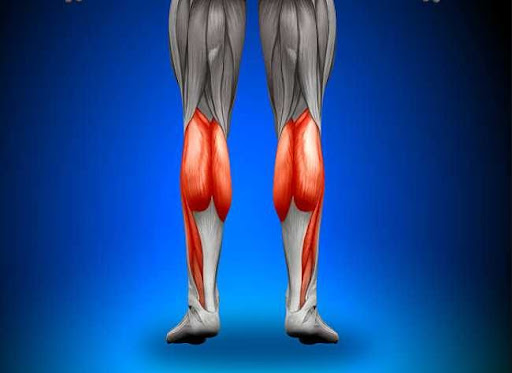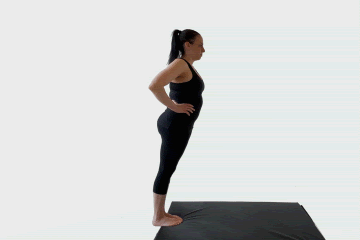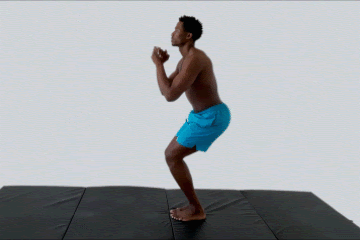
Join the tribe of Movement & Calisthenics Athlete – People just like you that are working with their own body weight to get strength, lose fat build muscle, recover from injuries and live their best lives!
A lot of people don’t realize that calisthenics can be used to grow calves.👊
You don’t need to head to a gym or buy heavy equipment if you want to make them grow.
The secrets to getting bigger calves aren’t complicated and are nothing new. We’re going to share with you the 4 must-knows that are guaranteed to build your calves.💯
If you’re frustrated with your calf size, read on!
What are the calf muscles?🤔
The calves are the bottom part of your legs, like your forearms to your arms.
It’s a muscle group made up of two muscles: the gastrocnemius and the soleus.
🤜The gastrocnemius is the outer and visible muscle. Its function is to point your toes or when you lift your heels upward.
🤜The soleus is the inner one underneath the gastroc which is a postural muscle. But we can develop this so once it grows, it can push out the gastrocnemius even more to get more visible calves.
We also have to mention that we want to grow our calves while maintaining a good body fat percentage. So that means focusing on building muscle and adding minimal (or no) fat at all.
Why do advanced calisthenics athletes have small calves?
It’s not that calisthenics training doesn’t let them grow the muscle. 👎 It’s more of a choice when calisthenics athletes aim for highly specialized goals.
They just don’t like getting them bigger since it won’t help them with their advanced upper-body skill set.
But don’t limit yourself to what your body can do. Remember that they are specialists and have very specific exercise goals.
If you still want to learn calisthenics exercises while still growing your calves, it is very much possible.
✊You will feel heavier when performing human flag or planche but don’t worry; it’s an extra challenge for you to even make your upper body much stronger. But specialized calisthenics athletes tend to take advantage of this; that’s why they usually don’t have big calf muscles.
🧐Can bodyweight training build muscle?
Most people think and claim calisthenics can’t build muscle, and this is B.S.!
☝️Meet the proper requirements of hypertrophy (the process of building muscle), and you are guaranteed excellent muscle development :
- Progressive overload by using calisthenics techniques – This simply means making your workout routines more challenging every session
- Proper nutrition – Eating enough protein and getting a caloric surplus (eating more than burn calories)
- Good recovery habits – Getting plenty of rest and managing your stress
For a complete guide on muscle-building in general, check this article: How to Build Muscle Mass using only Bodyweight
Calf development is generally similar to other muscle groups. Along with mentioned above, the proper training method should be implemented.
You need very minimal equipment. You just have to use a slightly elevated surface such as a single step of a staircase or a bench.
❌No need for external weights but a weighted vest or dumbbells are still welcome if you have access to it. There’s nothing wrong with multiple modalities incorporated in your training.
Secrets for bigger calves🔥
Genetics plays a major factor in how much size your calves can grow, but that doesn’t mean you can’t do anything about it.
While you cannot change the shape of the muscle, you can definitely make it grow using the right stimulus.
We’ll be implementing the tools of a professional bodybuilder that induces hypertrophy:
✅High metabolic stress – High training volume
✅High mechanical tension – FULL RANGE OF MOTION in a CONTROLLED MANNER
✅High muscle damage – Doing eccentric and concentric movements especially focusing on the “negative” (eccentric) or going down portion of the exercise
Using the effective exercises properly🔍
Direct and indirect training of your calves is needed in order to achieve the necessary requirements for hypertrophy.
Here are specific exercises you need to perform to maximize muscle growth.
📌Calf raises
You’ve probably familiar with this exercise if you’ve been looking into developing your calves.
Calf raises directly trains your muscles (as given in the name) by isolation. The motions perform the function of the calves, which is why it’s perfect for this purpose.
One crucial note that needed reminding here is to execute the exercise in a full range of motion. This means pushing all the way to the top until your toes are pointed to the ground and (ideally) going all the way to the bottom until the foot is fully flexed. So it’s best to elevate your feet when performing raises so you can go all the way down.
When fatigue sets in, the knee bends, and the top range of motion is not reached. This is considered the failure point of the exercise.
The two types of calf raises we want you to focus on are below.
📌Standing calf raises
The most basic variation of calf raises is the standing calf raises on two legs.
You can do this exercise with feet on the ground or elevate your feet with the balls of your feet only supported so that your heels are off the ground. The latter is ideal for getting a better stretch of the muscles and a better range of motion.
You can further increase the difficulty of the exercise by performing it on one foot. Just keep one leg bent and while the standing leg is working. The front knee (standing) remains completely straight. You can let your arms hold a sturdy surface for balance. You can also raise your arms forward for additional instability that requires more core muscles for balance.
📌Single leg calf raises are perfect for fixing leg muscle imbalances while increasing exercise intensity. Just don’t forget to do the other leg. You wouldn’t want to increase the imbalance with one leg bigger than the other!
How to perform:
- To do this, simply stand with good posture; with legs straight and shoulder-width apart.
- Push the toes down so that you activate your calves until the top.
- Hold the top for a brief moment.
- Lower down with control.
- Repeat for reps.
📌Bent leg calf raises
You can go even lower into the deep squat position
The exercise above primarily targets the gastrocnemius. This one targets the soleus. The knees bent position lessens the assistance of the gastrocnemius when performing the raises. As your knee bend, the soleus takes over the role of pointing your toes. These are basically calf raises in the squat position.
If you don’t have the necessary ankle mobility to perform the exercise, you can also place a low bench you can sit on when performing the exercise.
How to perform:
- From standing, lower down into a bent knee position like doing the bottom of the squat.
- Slightly raise your heels off the floor. This is the starting position.
- From here, slowly raise your heels even further to achieve the top position while keeping the knee bent.
- Hold the top position for a brief moment.
- Lower down with control then repeat for reps.
📌Plyometric exercise
Incorporating explosive exercises prior to training your calves can also be an option, especially if you want to train specifically for getting a higher jump and power. These exercises train the gastrocnemius, but slower resistance training offers better muscle-building potential. However, it does add variety to your training which can induce hypertrophy. Also, these exercises train the claves for strength, which provides more potential to build muscle as well. Exercises you can include for this are:
- Box jumps
- Hill sprints
- Jump squats
📌Compound movements
Even if you’re focused on growing your calves, prioritize building general leg training. This means training your regular squat, sissy squats, single-leg squat.
Obviously, these exercises build stronger legs, but also train and activate the calves to a certain degree. You can think of it as your warm-up before your direct calf training. Aim to achieve your pistol squats for overall leg strength, and muscle development
💥Go Slow
Like other exercises, calf training is prone to fast and bouncy reps.
Having slow, controlled movements with additional pauses at the top and at the bottom increases the time under tension which also increases the mechanical tension.
In addition. pausing at the bottom position removes the “stretch reflex” so you can maintain controlled reps and don’t rely on a bounce which adds momentum and makes the exercises a lot easier. The elastic Achilles tend can tendon can easily store potential energy, which can be abused and removes the effort from your calves.
As a general guide, follow 2 seconds going up, pause for a second at the top, 3 seconds going down then pause for a second at the bottom.
💥Do enough volume
Unlike our upper body, our legs are already powerful enough since we use them all time to stand and carry our body weight. When also carrying stuff or groceries, when we stand, we inevitably use our legs. It’s kind of like unintentional leg training.
So in order to make the already strong legs and calves bigger, we need to push it harder.
A 2017 research conducted by Schoenfeld et al., showed that calf development using calf raises can be done with either low repetition (6 – 10 reps) and heavy loading, which is usually done with weights, OR high repetition (20 – 30 reps) and bodyweight.
What matters more is the level of effort performed for the exercise. This means the exercise should be challenging for you in order to stimulate it. It’s either be heavy (with weights) or body weight (high reps).
Since we won’t be using any external resistance, our capacity to increase the difficulty of the exercise is limited by our weight, so we have to modify another variable to attain metabolic stress and mechanical tension.
How many reps to perform will be the main question we’re going to answer for our workout.
People tend to stick to the 8-12 rep range with 3-4 sets, thinking it would be enough to stimulate the calves, but this range is only effective if the suitable intensity is met.
As mentioned earlier, we’re always using our calves, so this rep range would probably be too easy for most individuals.
Don’t limit yourself with this “ideal range”. We’re already limiting our intensity stimulus by not using weights, so adding volume is the best training method we can use for building muscles.
High-volume training with low intensity might not be the most effective way to build strength, but it does increase muscle endurance and muscle size at the same time.
You can elicit hypertrophy with 3-6 sets of 10-40 reps with bodyweight training. Along with that, make sure you’re using the exercises above along with the suitable progression for your calves.
For example, single-leg calf raise if you can already hit the maximum limit of volume using both calves.
So how can you determine the exact reps you need along with that right rep range and sets?
The idea is to train to failure or close to it. This means doing calf raises until you can’t do a single rep. That’s mechanical failure. You can also reserve a few reps in your rank AKA Reps in Reserve RIR.
According to a recent 2021 meta-analysis, training to failure (on every set) isn’t necessary to build muscles, BUT on more trained individuals, training to failure with relatively low loading (when doing bodyweight is a great example), can help break training plateaus and make progress.
Keep your effort high. If you’re not getting challenged by your calf workout, then your calves definitely won’t grow!
You can get good growth in your leg workout routine once per week but aim to at least get 2 times per week for maximum results.
💥Quitting too soon
Probably the biggest reason why you’re not growing your legs is that you’re discouraged with your efforts and have already lost all hope for your calves.
The calves are stubborn leg muscles, but it doesn’t mean they won’t grow.
So the solution is to stay consistent with the leg journey, and you will get there.
It takes time to build muscles in general, but developing the calves will require a bit more dedication. It takes years, and not just going to the gym even for a a few months, will help you build the beefiest calves.
Stay patient.
💪Workout for Calves
You don’t need to go to the gym, and you can certainly do this at home.
Do this workout after your primary lower body exercises.
Standing calf raises 3-6 sets of 10 – 40 reps
1-minute rest
Squat/bent-leg calf raises 3-6 sets of 10 – 40 reps
1-minute rest
Bottom line
Calves are stubborn to grow, but it doesn’t mean it isn’t possible!💯
With the proper training techniques, recovery, nutrition, and discipline, tree-trunk-like calves are within your reach.
For your workout, keep in mind progressive overload by focusing on
- ✊Good technique
- ✊Slow and controlled movements
- ✊Challenging volume
- ✊Suitable progression
Don’t give up!☝️
If you need more help with your training, a personalized program would be the best bet in developing your muscle, strength, mobility, and movement.
Begin your personalized training by taking the first step of knowing where you are in your fitness journey.
Set the goal, know the path, and take action.🎯
TAKE THE ASSESSMENT NOW!









